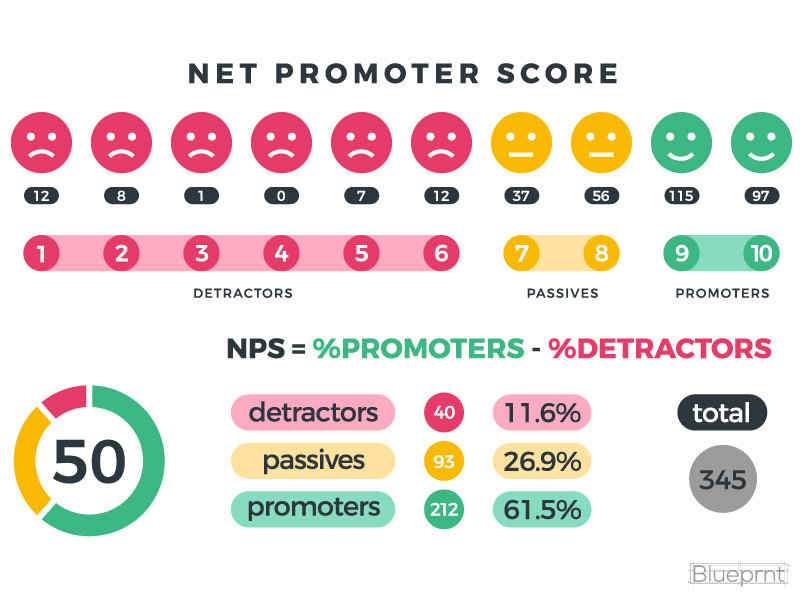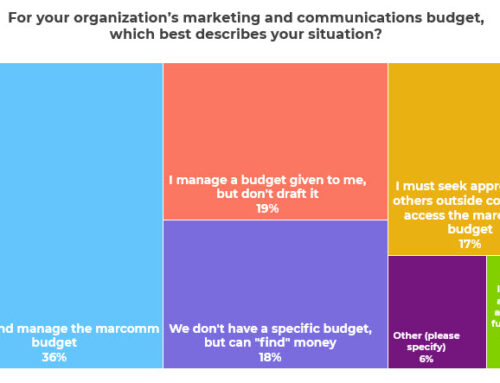Measuring communications and marketing work is a challenge because we often have way too many goals and objectives, so it’s hard to decide what matters most. Then there is the measuring itself: Yes, digital tools can give us tons of data, but that doesn’t mean that any of it is particularly insightful.
One approach to measuring objectives is to try to quantify change in the right direction over time. That’s where scales can be handy, such as how you rate something on a scale of 1 to 10, and how that changes over time.
The Net Promoter Score, which is used in business all the time, but less so in the nonprofit world, is one example of a scale to measure performance. Here’s a great visual of the scale and depth of meaning embedded in it:

To add some depth to the scales you might use to evaluate your efforts, I recommend you consider what’s called a Likert Scale. If you do a lot of surveying, you know what these are. But again, I think there are many opportunities to use these scales in measuring communications performance too. It’s a way to measure agreement/disagreement or more/less, for example, on a symmetric scale. They are usually an odd number so that the middle of the scale is neutral. But you can also do even-numbered scales that force people to choose in one direction or another.
Think about something you want to measure that could be an indicator of communications or marketing progress over time. Then apply one of these scales to it, such as
- Satisfaction (very satisfied, somewhat satisfied, neither satisfied or dissatisfied, somewhat dissatisfied, very dissatisfied)
- Effect on Something (no effect, minor effect, neutral, moderate effect, major affect)
- Level of Familiarity (not at all familiar, slightly familiar, somewhat familiar, moderately familiar, extremely familiar)
- Level of Influence (not at all influential, slightly influential, somewhat influential, very influential, extremely influential)
- Frequency (never, rarely, occasionally, sometimes, frequently, usually, every time)
There are many, many more. Here’s my favorite list that I come back to a lot.
Of course, to collect this data, you are surveying people about their experiences or opinions. From a communications point of view, that could mean surveying the people your communications are created for, but it could also mean using more surveying tools in your program work. It just depends on the purpose of your communications — why are you communicating in the first place and what do you hope changes as a result of those communications?
Adding some Likert scales could help you measure those changes over time.





